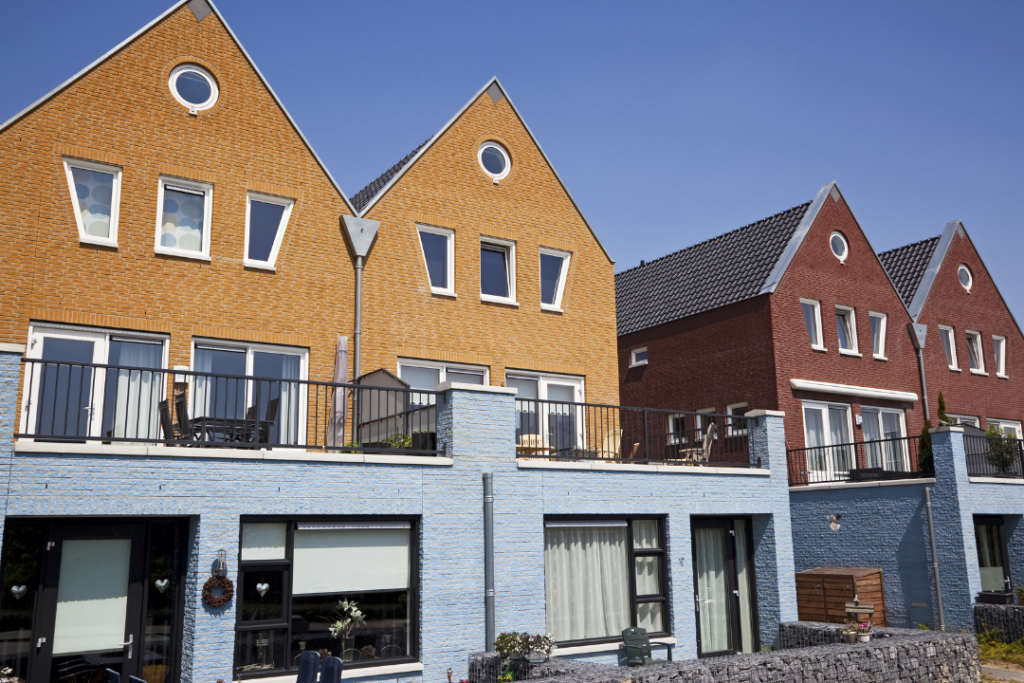
FORCED APPRECIATION VS MARKET APPRECIATION
Taking Control For Greater Returns
Most people are aware of market appreciation. You can see it in rising home prices.
Surely you have noticed the rising prices people are paying for homes these days.
Market appreciation is primarily due to inflation. Supply and demand drives market appreciation as well.
As more people move to a given area the demand for housing increases. Usually new housing is built to accommodate the demand.
It is not uncommon for it to take years for the housing supply to meet the rising demand. Many investors use inflation in the market to create good returns over long periods of time.
But what if you could take more control over the investment and force appreciation, thus creating a greater return?
MARKET APPRECIATION
When I was in college my dad was a builder and real estate broker. He was building duplexes in Tucker, Georgia for investors. I obtained my real estate license and worked for him part time between classes.
One of my jobs was creating a cash flow analysis for each property. This was before computerized spreadsheets were available. Interest rates were high and so was inflation. The federal funds rate was almost 20 percent and inflation was over 10 percent.
I think we used a conservative inflation rate of 4-5 percent per year. We expected the investors to put 25-percent down and assumed the property was held for about seven years. This was a traditional, time-proven way of making money by investing in real estate.
The analysis also showed how inflation and leverage increase someone’s ROI, or return on investment.
Market appreciation is dependent on external factors beyond your control. Prices are driven by supply and demand. Job and population growth contribute to it as well. Quality of the schools. Proximity to entertainment. The amount of new construction.
A good strategy is to buy in a path of progress using leverage. By a “path of progress” we mean somewhere which is seeing good job and population growth. If we see Starbucks or Home Depot or similar national businesses moving in, we assume their research team sees growth ahead in this area.
For those who are interested in the numbers, we’ll take a look at a simple case and run a projection using a financial calculator. We’ll ignore the monthly cash flow and any loan amortization since we are only looking at the increase in value from market appreciation.
Consider that inflation averaged around 4 percent per year from 1970 to 2020. Let’s assume an investor, Mark, is able to put 25 percent down on a $100,000 house.
Over the next seven years the property increases in value 4-percent per year. At the end of the seven years the market shows the property to be worth $132,250, an increase of $32,250. Adding this increase to his initial down payment, we can see that Mark’s equity has increased to $57,250, ($25,000 plus $32,250).
For the curious, this works out to an annual average return on investment of 11.9 percent.
If Mark had paid cash for the house his return from market appreciation would have just been the 4-percent.
Again, this does not take into account the cash flow stream, loan amortization, and tax benefits that Mark enjoys, nor does it include selling costs if he decides to cash out. But it allows you to see how value is created using market appreciation.
Depending on market conditions the property might have appreciated more. Or less. All from external, beyond our control forces in the market. In other words: simple market appreciation.
But what if you could force an increase in the market value of the property?
FORCED APPRECIATION
What if you could force appreciation?
The prices of single family homes are driven by the market. The value of a single family home is dependent on what the other similar single family homes in the neighborhood are selling for. These are the comparable properties, or “comps”.
Just about any licensed Realtor can pull up a property on the MLS, run a few comps, and tell you what the property will likely sell for.
Some people like to buy a distressed house at a discount, fix it up, then sell it for a profit. This is called flipping and is an example of forced appreciation. The total process may take anywhere from a few weeks to several months or more, depending on the extent of the rehab. Again, the sales price is limited by the market.
Commercial property is valued differently. Values are based on CAP rate, or capitalization rate. You can view our blog on understanding Cap Rates by clicking this link. UNDERSTANDING CAP RATES
First, let us look at what is called the Net Operating Income (NOI). This is computed by subtracting the expenses from the income (before any payment on the loan.)
The Cap Rate is simply Net Operating Income (NOI) divided by the Property Value.
Or Cap Rate = NOI / Property Value
To put it another way the Property Value is equal to the Net Operating Income (NOI) divided by the Cap Rate.
Or Property Value = NOI / Cap Rate
The Cap Rate is set by what other investors are willing to pay for similar properties in the market. You can talk with brokers in the area to find out what the local cap rate is for a given type of property.
You and I don’t control the Cap Rate. But, and here is the secret to forcing appreciation, we can have some control of the Net Operating Income. We can increase the revenue produced by the property and/or we can reduce the expenses of operating the property.
So for a given market Cap Rate, if you can increase Net Operating Income, the Property Value will increase proportionately.
Think about commercial properties as a business. If you or I can increase the net income for the business, the business is worth more to us and to another investor.
How does this work?
Find a property that is operating below its potential. A commercial broker can help with this. Maybe management is doing a poor job. Rents may be below market. Expenses may be high. The property may need repairs to get full market rent.
Let’s take a simplified example.
Suppose Nancy buys a 100 unit apartment complex, with partners, for $10,000,000 with a 6% cap rate. NOI is initially $600,000 per year.
Over the next couple of years Nancy is able to increase rents to market rates. A utility bill-back system is implemented to reduce expenses. These changes result in a net increase of $100/month per door. NOI increases by $100 per month per door x 12 month x 100 doors, or $120,000 per year.
Now, assuming the cap rate has remained the same, we can use the cap rate to determine the increase in value
$120,000 / .06 = $2,000,000.
If Nancy purchased the apartments with 30 percent down, her down payment is $3,000,000. She and her partners grew their equity from the down payment of $3 million up to $5 million.. Their total ROI, or return on investment, is 40 percent.
Again, this is a simplified example to show only the increase in value due to forced appreciation.
BUT WAIT, THERE’S MORE!
The point is not just to point out the differences between market appreciation and forced appreciation. What if they are combined? What if you could use both on a commercial property in a good location?
Can you see where starting with a multi-family property that has below market rents could be improved and held for a few years to get even better returns?
CONCLUSION
Forced appreciation vs. market appreciation is not really an either/or question. Rather, each is a tool that can be effectively used to create wealth.
Market appreciation is dependent on external forces that can be mitigated by selecting an excellent location.
But you can force appreciation on commercial property and create additional value by reducing expenses and increasing revenue. Combining these tools can be a great way to create wealth.
LET’S GET TO KNOW EACH OTHER BETTER
Attune Investments provides a better return for our investors. And we make a positive impact in people’s lives and in our world.
If you want to learn more about how others are investing with us then I invite you to join our club and request a conversation with us.
Through the power of a syndication partnership with other investors like you, working with managing partners who are experienced in managing apartment complexes, you can own multifamily assets.
Or you can choose to loan money, get in with a clear return, and get our earlier, putting your money to work.
If you haven’t already subscribed to our BLOG, you can increase your knowledge and comfort with this asset class by subscribing now. It’s free. We publish an article every week. SUBSCRIBE HERE
And take one more step. Become a member of our ATTUNE INVESTORS CLUB in which you have more personal access to us. JOIN HERE
After you join, schedule a call with one of us and we can get to know each other better and answer your questions. We are required by the SEC to build a relationship with you before we can share any specific investment opportunities. So JOIN TODAY.
You can also find us on Facebook at OUR ATTUNE INVESTMENTS FACEBOOK PAGE.
If you like something you see here please share it with others.

Mike is a retired aerospace engineer with a passion for real estate investing and teaching financial literacy. He lives with his wife in Daytona Beach, Florida.

One Response